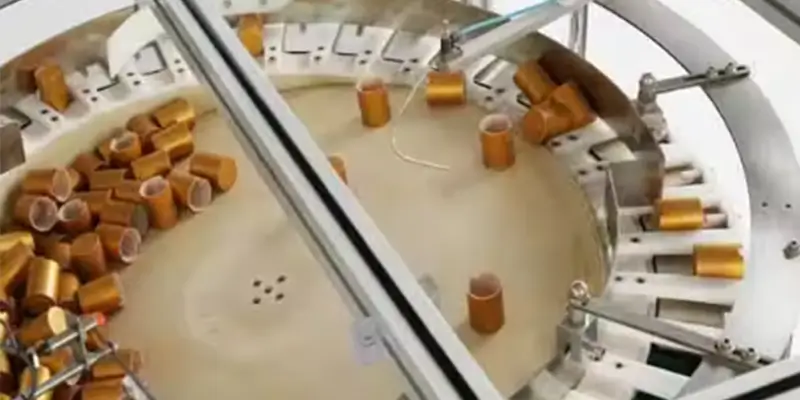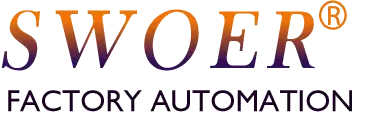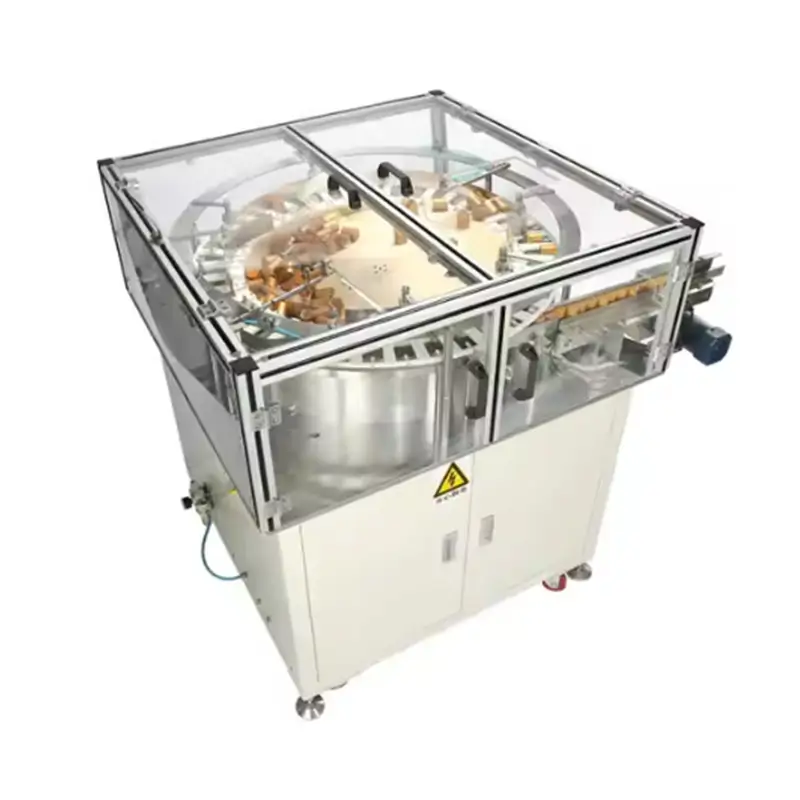रूपरेखा
केन्द्रापसारी फीडरों का अवलोकन और विनिर्माण में उनकी भूमिका।
परिभाषा एवं अन्य फीडरों से तुलना।
आधार संरचना, कटोरा, ड्राइव तंत्र, फ़ीड ट्रैक, और हॉपर।
प्रचालन के चरण: लोडिंग, त्वरितीकरण, निर्वहन।
उद्योग एवं विशिष्ट उपयोग।
दक्षता, बहुमुखी प्रतिभा, कम डाउनटाइम और परिशुद्धता।
चयन हेतु विचारणीय कारक.
सामना की जाने वाली समस्याएं और रखरखाव संबंधी सुझाव।
नवप्रवर्तन एवं उन्नति।
केन्द्रापसारी फीडर के बारे में सामान्य पूछताछ.
परिचय
आधुनिक विनिर्माण में सेंट्रीफ्यूगल फीडर महत्वपूर्ण हैं, जो कुशलतापूर्वक भागों को संभालते और दिशा देते हैं। उनके यांत्रिकी को समझने से व्यवसायों को इष्टतम उत्पादकता के लिए सही उपकरण चुनने में मदद मिलती है।
सेंट्रीफ्यूगल पार्ट्स फीडर क्या है?
सेंट्रीफ्यूगल पार्ट्स फीडर छोटे घटकों को हिलाने और दिशा देने के लिए सेंट्रीफ्यूगल बल का उपयोग करता है, जो इसे वाइब्रेटरी फीडर से अलग करता है। यह उच्च गति वाली फीडिंग और सटीक पार्ट ओरिएंटेशन के लिए आदर्श है।
अधिक जानकारी के लिए यह लेख पढ़ें: सेंट्रीफ्यूगल फीडर क्या हैं?
केन्द्रापसारी फ़ीड सिस्टम के प्रमुख घटक
केन्द्रापसारी फीडर इसमें कई प्रमुख भाग शामिल हैं:
- आधार संरचना: स्थिरता प्रदान करता है.
- कटोरा: भागों को गति प्रदान करता है।
- ड्राइव तंत्र: घूर्णन को शक्ति प्रदान करता है।
- फ़ीड ट्रैक: भागों को निर्वहन हेतु मार्गदर्शन करता है।
- हूपर: कटोरे में भागों को संग्रहीत और खिलाता है।
सेंट्रीफ्यूगल बाउल फीडर कैसे काम करते हैं
इस ऑपरेशन में तीन चरण शामिल हैं:
- लोडिंग: भाग कटोरे में प्रवेश करते हैं।
- त्वरित करना: केन्द्रापसारी बल भागों को बाहर की ओर ले जाता है।
- निर्वहन: उन्मुख भाग फ़ीड ट्रैक से बाहर निकलते हैं।
केन्द्रापसारी फ़ीड प्रणालियों के अनुप्रयोग
इन फीडरों का उपयोग ऑटोमोटिव, इलेक्ट्रॉनिक्स और फार्मास्यूटिकल्स जैसे उद्योगों में किया जाता है, जो विभिन्न प्रकार के छोटे घटकों को कुशलतापूर्वक संभालते हैं।

सेंट्रीफ्यूगल फीडर के उपयोग के लाभ
प्रमुख लाभों में शामिल हैं:
- उच्च गति संचालन.
- विभिन्न भाग प्रकारों के लिए बहुमुखी प्रतिभा।
- रखरखाव और डाउनटाइम में कमी.
- सुसंगत भाग अभिविन्यास.
सही सेंट्रीफ्यूगल पार्ट्स फीडर का चयन
सबसे उपयुक्त फीडर का चयन करने के लिए भाग के आकार, अनुप्रयोग की आवश्यकताओं और उत्पादन मात्रा जैसे कारकों पर विचार करें।
सामान्य चुनौतियाँ और समाधान
आम समस्याओं में भागों का जाम होना और घिस जाना शामिल है। नियमित रखरखाव और उचित संरेखण इन चुनौतियों को कम करने में मदद कर सकता है।
केन्द्रापसारी फीडिंग प्रौद्योगिकी में भविष्य के रुझान
उभरते रुझानों में स्वचालन में वृद्धि, स्मार्ट प्रौद्योगिकियां, तथा फीडिंग प्रणालियों में स्थिरता पर ध्यान केंद्रित करना शामिल है।
केन्द्रापसारक फीडर और गोली पैकेजिंग संयोजन वीडियो
पूछे जाने वाले प्रश्न
- कंपन फीडर पर लाभ?
उच्च गति और बेहतर अभिविन्यास.
- रखरखाव युक्तियाँ?
नियमित निरीक्षण एवं सफाई।
- भाग संगतता?
सामग्री के आकार और आकृति के अनुसार अनुकूलित
- अनुकूलन विकल्प?
हाँ, विशिष्ट आवश्यकताओं के अनुरूप समायोजित।

